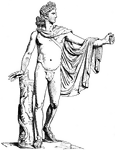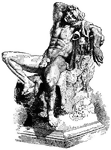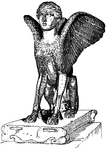Roman Sculpture
The Roman Sculpture ClipArt gallery offers 7 examples of freestanding and relief sculpture of the Ramon Empire.

Apollo of the Belvedere - Front View of Statue
Illustration of the famous statue Apollo Belvedere. Created circa AD120-140, the statue depicts Apollo…

Sculpture of Augustus
Augustus, born Gaius Octavius Thurinus, was adopted by his great-uncle Julius Caesar in 44 BC, and between…

The Barberini Faun, or Drunken Satyr
Illustration of the life-size marble statue located in Munich, Germany. It was found in 1620 in a moat…

The Dying Gaul
A Roman copy of an ancient Greek sculpture. The copy is made of marble, while the lost original sculpture…

Sphinx of Lanuvium
A Graeco-Roman marble table support in the shape of a sphinx. It was found in the ruins of the Villa…

Relief of Trajan Column
"The column was originally surmounted by a colossal statue of Trajan (replaced in the seventh century…
